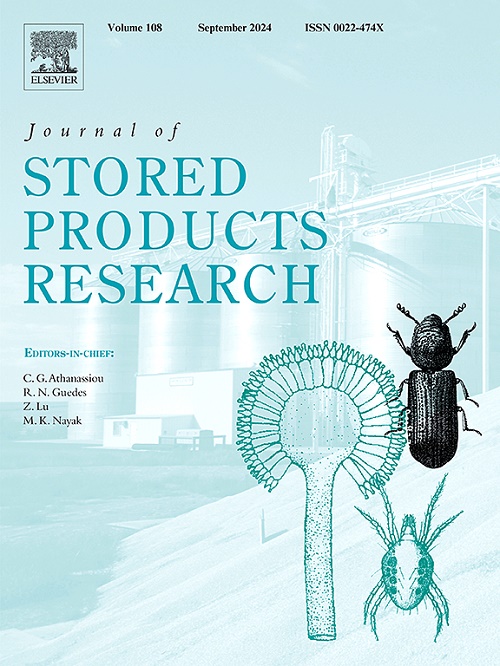Seasonal factors influence the organoleptic quality and shelf-life of fresh-cut turnip greens
IF 2.7
2区 农林科学
Q1 ENTOMOLOGY
引用次数: 0
Abstract
Turnip greens are leafy vegetables from the Brassica family highly popular in the Southeast United States, where they are sold in whole and fresh-cut formats. Fresh-cut processing favors convenience but accelerates leaf senescence and quality degradation, contributing to consumer rejection and postharvest losses and waste. Turnip greens, cultivated year-round in different regions, are exposed to variable growing conditions across seasons. While seasonal variations in nutritional and organoleptic quality are documented for other species during postharvest storage, this has not been investigated in turnip greens in fresh-cut format. In this study, turnip greens grown in two seasons—fall and winter-spring—were fresh-cut processed and stored at 5 °C for up to 21 days. Subjective (marketability scores), and objective (color, total chlorophyll, carotenoids, polyphenols and ammonia contents) parameters were monitored at 0, 7, 14, and 21 days of storage. Results showed that while sensory quality declined during storage in both seasons, leaves grown in the fall exhibited a significantly faster deterioration rate compared to winter-spring samples. This trend mirrored the higher rates of chlorophyll and fresh weight loss shown by turnip greens grown in the fall. Seasonal variations in environmental factors and agronomic practices likely induced distinct physiological responses, influencing postharvest quality and shelf-life. This is the first report of organoleptic and compositional quality changes in fresh-cut turnip greens affected by the growing season. Tailoring postharvest practices to seasonal shelf-life variations can contribute to minimizing food losses and optimizing produce supply chain performance.

季节因素影响鲜切萝卜青菜的感官品质和保质期
芜菁是一种绿叶蔬菜,来自芸苔科,在美国东南部非常受欢迎,在那里它们以整块和新鲜切割的形式出售。新鲜切割加工有利于方便,但加速叶片衰老和质量退化,导致消费者拒收和采后损失和浪费。芜菁在不同地区全年种植,不同季节的生长条件不同。虽然其他物种在采后储存期间营养和感官质量的季节性变化是有记录的,但尚未对新鲜切的萝卜绿色进行调查。在这项研究中,在秋季和冬春两个季节生长的萝卜绿叶被新鲜切割加工并在5°C下储存长达21天。在0、7、14和21天的贮藏期间监测主观(市场性评分)和客观(颜色、总叶绿素、类胡萝卜素、多酚和氨含量)参数。结果表明,虽然感官品质在两个季节的贮藏过程中都有所下降,但秋季叶片的变质速度明显快于冬春季叶片。这一趋势反映了秋天生长的萝卜的叶绿素含量和新鲜体重下降的速度。环境因素和农艺做法的季节变化可能引起不同的生理反应,影响采后品质和保质期。本文首次报道了受生长季节影响的鲜切萝卜青菜的感官和成分质量变化。根据季节货架期的变化调整采收后的做法有助于最大限度地减少粮食损失并优化农产品供应链绩效。
本文章由计算机程序翻译,如有差异,请以英文原文为准。
求助全文
约1分钟内获得全文
求助全文
来源期刊
CiteScore
5.70
自引率
18.50%
发文量
112
审稿时长
45 days
期刊介绍:
The Journal of Stored Products Research provides an international medium for the publication of both reviews and original results from laboratory and field studies on the preservation and safety of stored products, notably food stocks, covering storage-related problems from the producer through the supply chain to the consumer. Stored products are characterised by having relatively low moisture content and include raw and semi-processed foods, animal feedstuffs, and a range of other durable items, including materials such as clothing or museum artefacts.

 求助内容:
求助内容: 应助结果提醒方式:
应助结果提醒方式:


